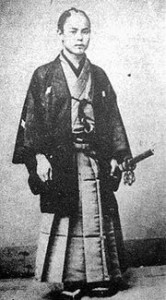A cord of Samurai , Japanese chivalry (4) 2015/06/15
“Hagakurfe” was one of the most popular textbook for Samurai. It is the record of words and deeds of Yamamoto Tsunetomo (1659- 1719) who was a priest but used to be a minister of lord Saga in north Kyushu.
Tsunetomo said that he found Japanese chivalry to die. Samurai should be always ready to die or fight for his life whenever justice is in danger. It is the most humiliating thing and disgrace for Samurai to let go or not to stand up against injustice. And this disgrace lasts for forever.
Nitobe inazou who contributed lots to educate young Japanese published “Bushido (Japanese chivalry)” in English in 1899. He wrote this book to explain to foreigners about “Bushido (Japanese chivalry)” as the backbone of moral in Japanese society. For that purpose he pointed 7 key elements of Bushido, namely justice, courageousness, courtesy, virtue, sincerity, honor, loyalty. Among them, Nitobe inazou raised to do justice as most important code to be kept by Samurai and enough courageousness to do justice.
He also explained the end of Japanese chivalry is not to kill or destroy enemies but to keep peace without fighting each other.
He introduced old Japanese saying “ In flowers, cherry trees, in men, Samurais.”.
At Edo era, Samurais occupied around 7% of total population and tried their best to educate themselves and to be the good sample for ordinary farmers, fishers and town people. On the other hand, ordinary people admired Samurai and tried hard to follow Samurai’s way of living which contributed lots to keep moral and peace in Japanese society.








